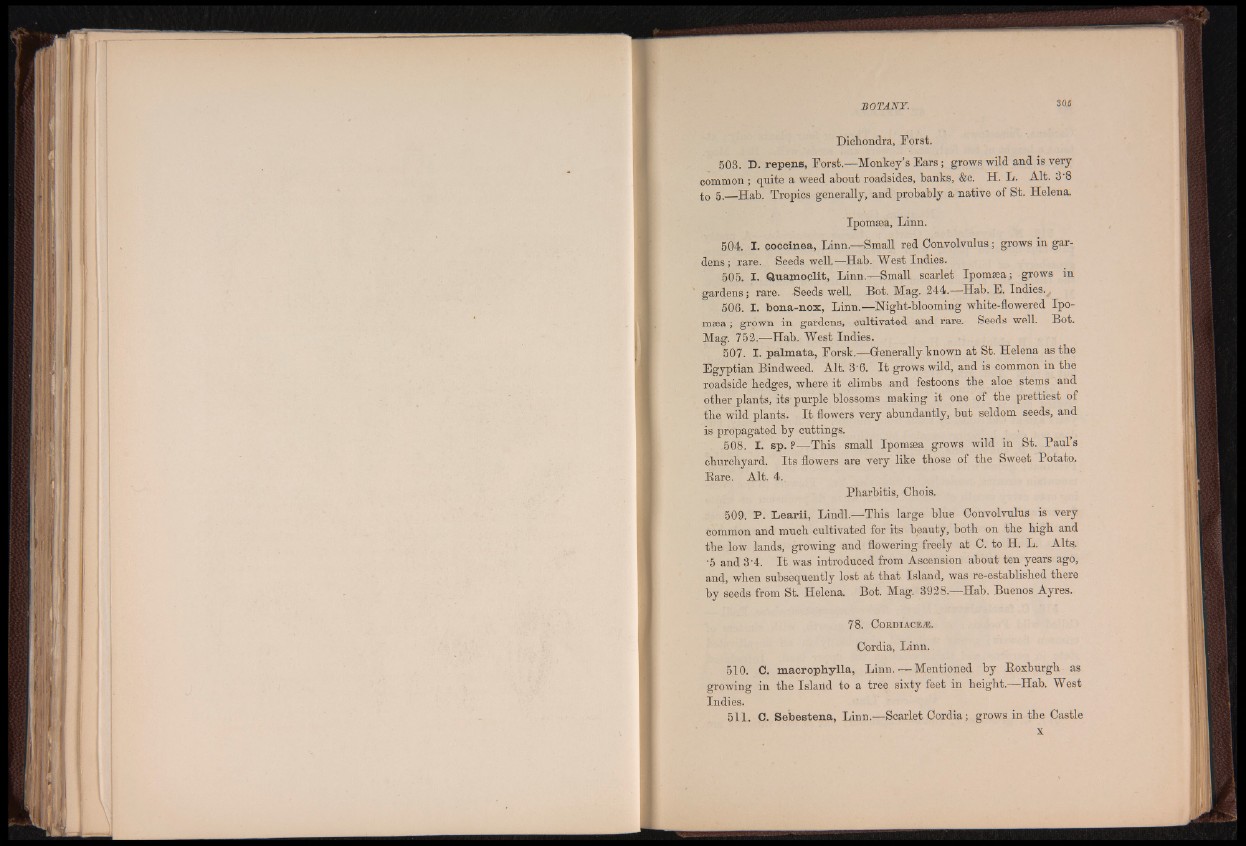
Dichondra, Eorst.
BOB. D. repens, Eorst.—Monkey’s Ears; grows wild and is very
common ; quite a weed about roadsides, banks, &c. H. L. Alt. 3'3
to 5, Hab. Tropics generally, and probably a native of St. Helena.
Ipomaea, Linn.
504. I. coccinea, Linn.—Small red Convolvulus; grows in gardens;
rare. Seeds well.—Hab. West Indies.
505. I. Quamoclit, Linn.—Small scarlet Ipomsea; grows in
gardens; rare. -Seeds well, Hot. Mag. 244. Hab. E. Indies.^
506. I. bona-nox, Linn.—Night-blooming white-flowered Ipo-
msea; grown in gardens, cultivated and rare. Seeds well. Bot.
Mag. 752.—Hab. West Indies.
507. I. palmata, Eorsk,—Generally known at St. Helena as the
Egyptian Bindweed. Alt. 3 "6. I t grows wild, and is common in the
roadside hedges, where it climbs and festoons the aloe stems and
other plants, its purple blossoms making it one of the prettiest of
the wild plants. I t flowers very abundantly, but seldom seeds, and
is propagated by cuttings.
508. I. sp. ?—This small Ipomsea grows wild in St. Paul’s
churchyard. Its flowers are very like those of the Sweet Potato.
Bare. Alt. 4.
Pharbitis, Chois.
509. P. Learii, Lindl.—This large blue Convolvulus is very
common and much cultivated for its beauty, both on the high and
the low lands, growing and flowering freely at C. to H. L. Alts.
•5 and 3'4. I t was introduced from Ascension about ten years ago,
and, when subsequently lost at that Island, was re-established there
by seeds from St. Helena. Bot. Mag. 3928.—Hab. Buenos Ayres.
78. C o r d i a c e ,®.
Cordia, Linn.
510. C. macrophylla, Linn.—-Mentioned by Roxburgh as
growing in the Island to a tree sixty feet in height.—Hab. West
Indies.
511. C. Sebestena, Linn.—Scarlet Cordia; grows in the Castle
x